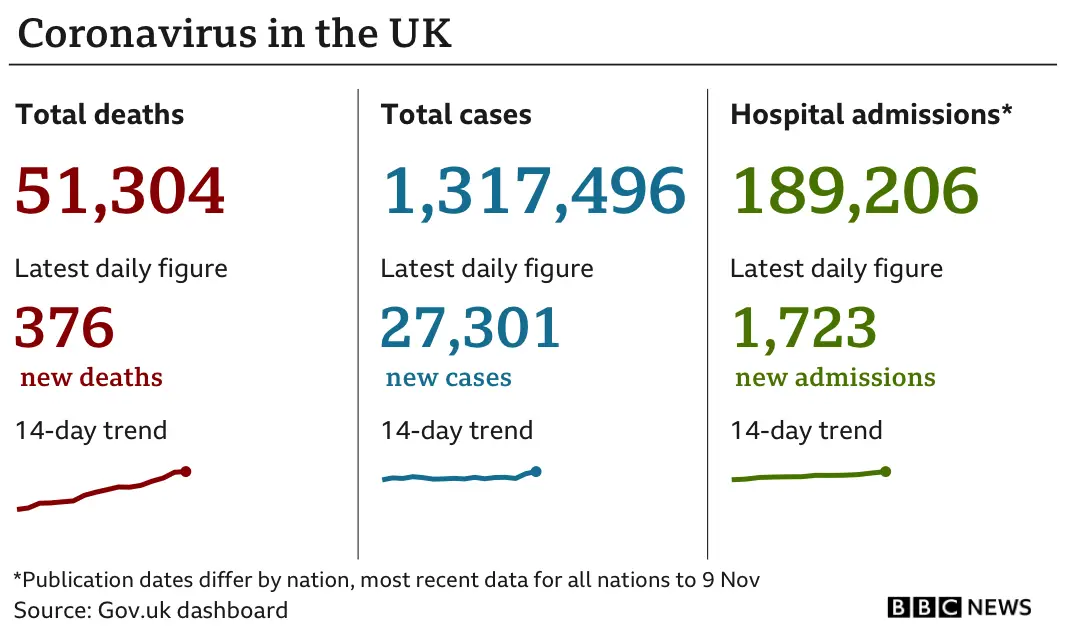Covid: Children more likely to be infected in second wave
 Getty Images
Getty ImagesThe number of school-age children with coronavirus has risen "significantly" in the second wave compared with the first, according to the government's scientific advisers.
Children are now more likely than adults to be the person bringing a Covid infection into a household.
But families with children are at no higher risk of severe illness.
The National Education Union (NEU) said it was "troubled" by the number of children testing positive.
The exact role children play in transmitting coronavirus has long been an open question.
It's clear young people as a group are at very low risk of becoming seriously ill from the virus themselves.
There is also some evidence younger children are less likely to even contract it in the first place.
But when it comes to older children, their role in passing on the virus has been much less clear.
A review presented to government and published on 13 November outlines the growing evidence older children can catch and transmit Covid-19 at similar rates to adults.
From around the time schools reopened in September, a rising number of children have been testing positive for coronavirus, according to the advisory group.
But the paper said the extent to which transmission was occurring in schools was "unproven and difficult to establish".
Two major surveillance studies by the Office for National Statistics (ONS) and Imperial College London show infections among people aged 16-24 were increasing in September.
By October increases could be seen throughout the 2-24-year-old age bracket.
There were signs of rising infection in the wider population before schools went back, however.

The government's Scientific Advisory Group for Emergencies (Sage) has previously said reopening schools was likely to increase transmission of the virus.
Chief Medical Officer for England Chris Whitty also acknowledged this, but said trade-offs would have to be made to allow schools to remain open while controlling the virus.
The 13 November advisory paper said there were "significant educational, developmental and mental health harms from schools being closed".
Schoolchildren and young adults have experienced a much faster rise in infections than other age groups in the second wave.
Prof Mark Woolhouse at the University of Edinburgh said this was "not surprising given that schools are operating much closer to normality than most other parts of society".
The review made clear it was not possible to separate contacts in school from contacts around school including travelling to and from, and socialising afterwards.
However, teachers were no more likely to test positive for coronavirus than other workers, according to ONS data.
Dr Sarah Lewis, an epidemiologist at the University of Bristol, said this was "reassuring" and suggested "the measures in place to reduce transmission in schools are working".
People living with secondary-school-age children were 8% more likely to catch the virus.
But research by the London School of Hygiene and Tropical Medicine and the University of Oxford found that people living with under-18s had no increased risk of becoming seriously ill from Covid.
The NEU said it was concerned by the "finding that children aged 12-16 played a 'significantly higher role' in introducing infection into households in the period after schools reopened their doors to all students".
The union suggested this was down to "the difficulty of social distancing, the absence of face masks inside classrooms, the problems of ventilation, the size of 'bubbles' and the cross mixing on school transport, as well as of secondary pupils mixing outside school".
Follow Rachel on Twitter
